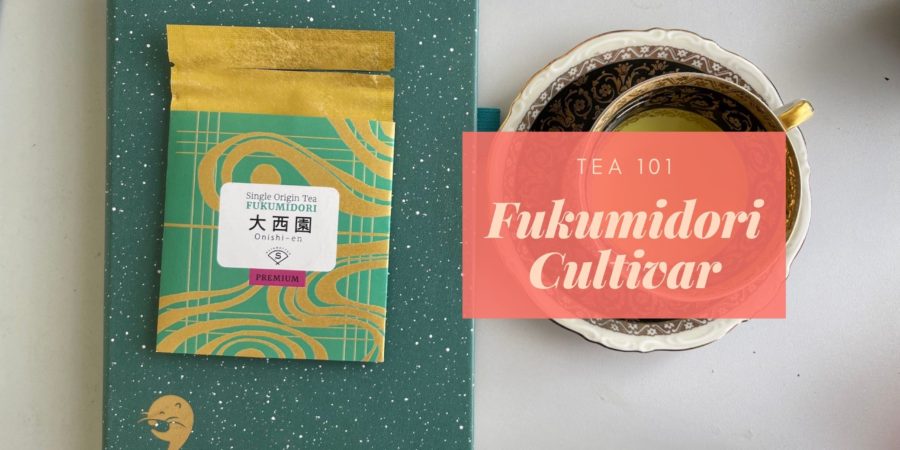Now that I’m back in my dorm working on my thesis, I have time to drink tea (or rather, drinking tea is how I take a break). I’ve also got, including this tea, three more Japanese cultivars to drink and I’m so excited about it! So here’s a tea that I’ve been looking forward to revisiting, the fukumidori cultivar.
What is the Fukumidori Cultivar?
The Fukumidori cultivar is another cultivar from Saitama (no surprise since these teas are from Sayama in Saitama prefecture) and it’s a cross between the Yabukita cultivar and the 23F1-107 cultivar (which in turn is a cross between the Sayamamidori and Yabukita cultivar). It was registered on 6th June 1986.
Of course, the cultivar name has a meaning too – It encompasses the hope that the green (midori) of the tea fields will contribute to the wealth (fuku) of the farmers.
Now for the cultivar characteristics: this cultivar produces just as much tea as the Yabukita cultivar but is more resistant to the cold. It’s also resistant to diseases like needle blight disease (赤枯れ) but sadly is less resistant than other cultivars to anthrax (炭そ病) disease. It’s considered a mid harvest tea, since it buds two days later and is harvested one day later than Yabukita.
The tea produced from this cultivar is supposed to be pretty similar to the Yabukita, and it’s known for its refreshing fragrance. According to a youtube video I found, the tea has a smell that reminds him of sakura or mugwort.
Tasting Notes


Fukumidori was one of the teas that I had the strongest memory of because of its clear citrus notes the first time I had it. This time, however, things were somewhat different – I’m not sure if it’s because of the weather conditions for this batch, or because of the water in France – but it was still a good tea.
I found this tea to be mild, with sweet vegetal and floral notes. The aftertaste was actually quite decent given how soft the tea was. The tea from the second steep had some mild umami and bitter notes added on to the tea, making it a fairly complex tea for me.
For some reason, I didn’t get any citrus notes this time, but instead got a pretty distinct floral note for almost all the steeps. There’s also a bitter note to watch out for – I made the mistake of steeping the tea for too long in my first tea session and the bitterness was very strong.
If you’re interested, you can find my first review of the tea here.
Conclusion and References
I can’t lie, I was really looking forward to the citrus notes in this tea and even though the floral notes were lovely, it just wasn’t the same. I’m hoping that it’s a combination of the weather for that harvest and the water in France that resulted in it, and that the next time I drink Fukumidori, I’ll get those lovely citrus notes again.
For this post, I used the information from AgriKnowledge and a youtube video! The video cites Fukumidori as a cross between Yabukita and Sayamamidori, but I took the cultivar information from AgriKnowledge instead since I think it’s a bit more reliable. But the video does show you how to steep the tea and its colours, so I’ll embed it below too!

It’s such a pity that you didn’t get the citrus notes you were hoping from out of this tea. Your cup and saucer are absolutely stunning!!
It’s a pity but at least the floral notes are nice too! Thank you, I got them from vinted so I’m pleased with my find!
[…] second tea is the fukumidori (tea 101 post), which I also found different from the others. The first sip of this tea made me think […]